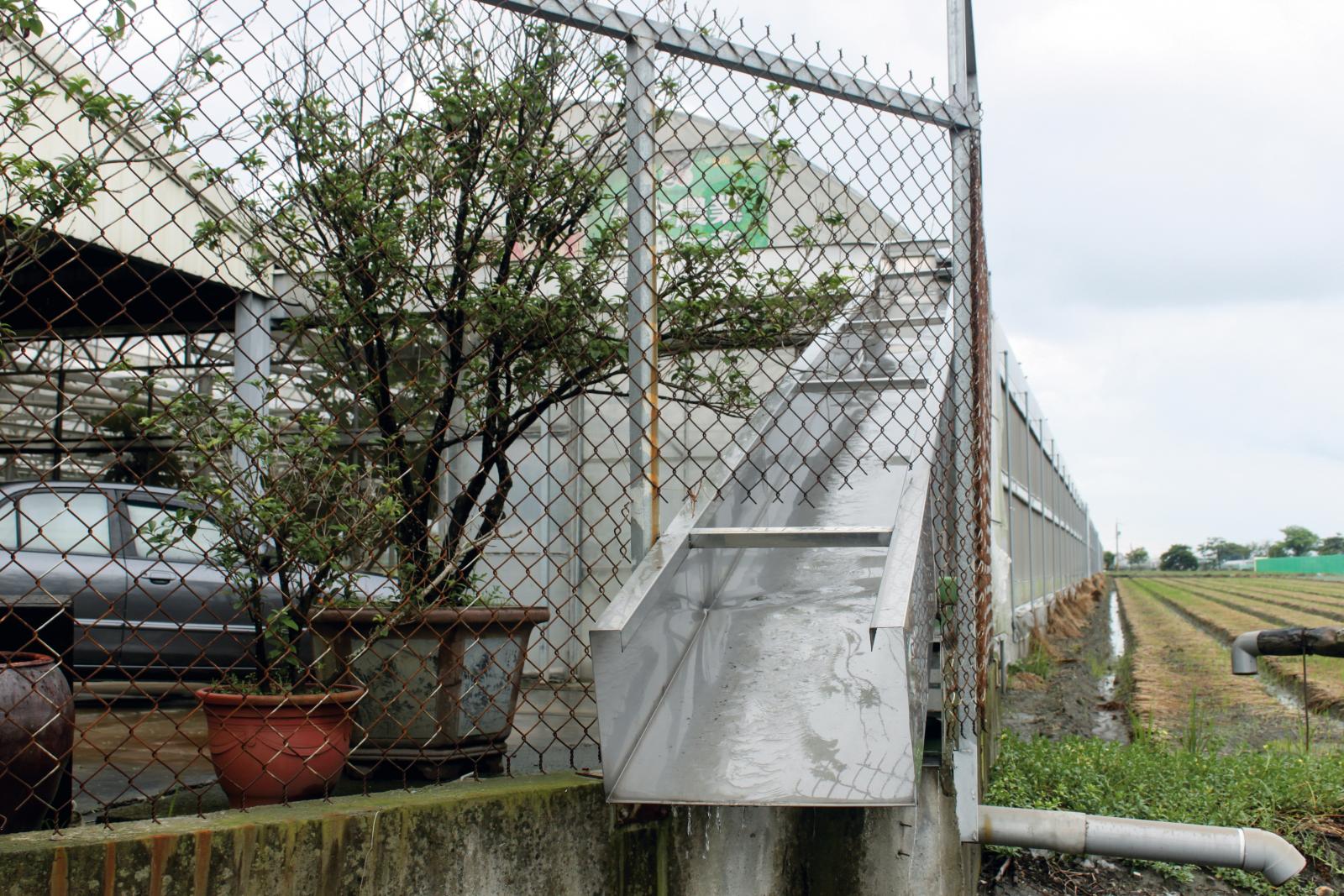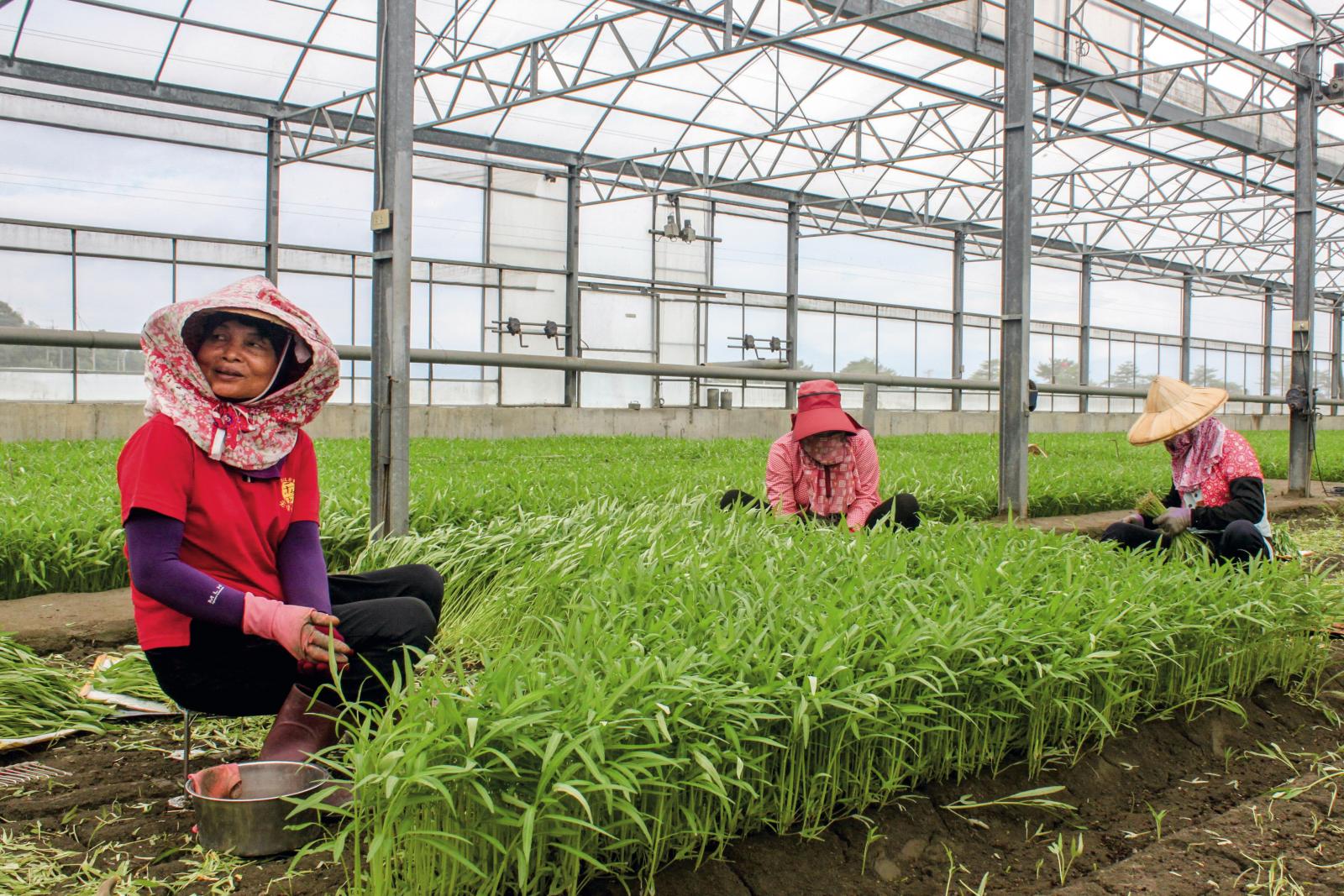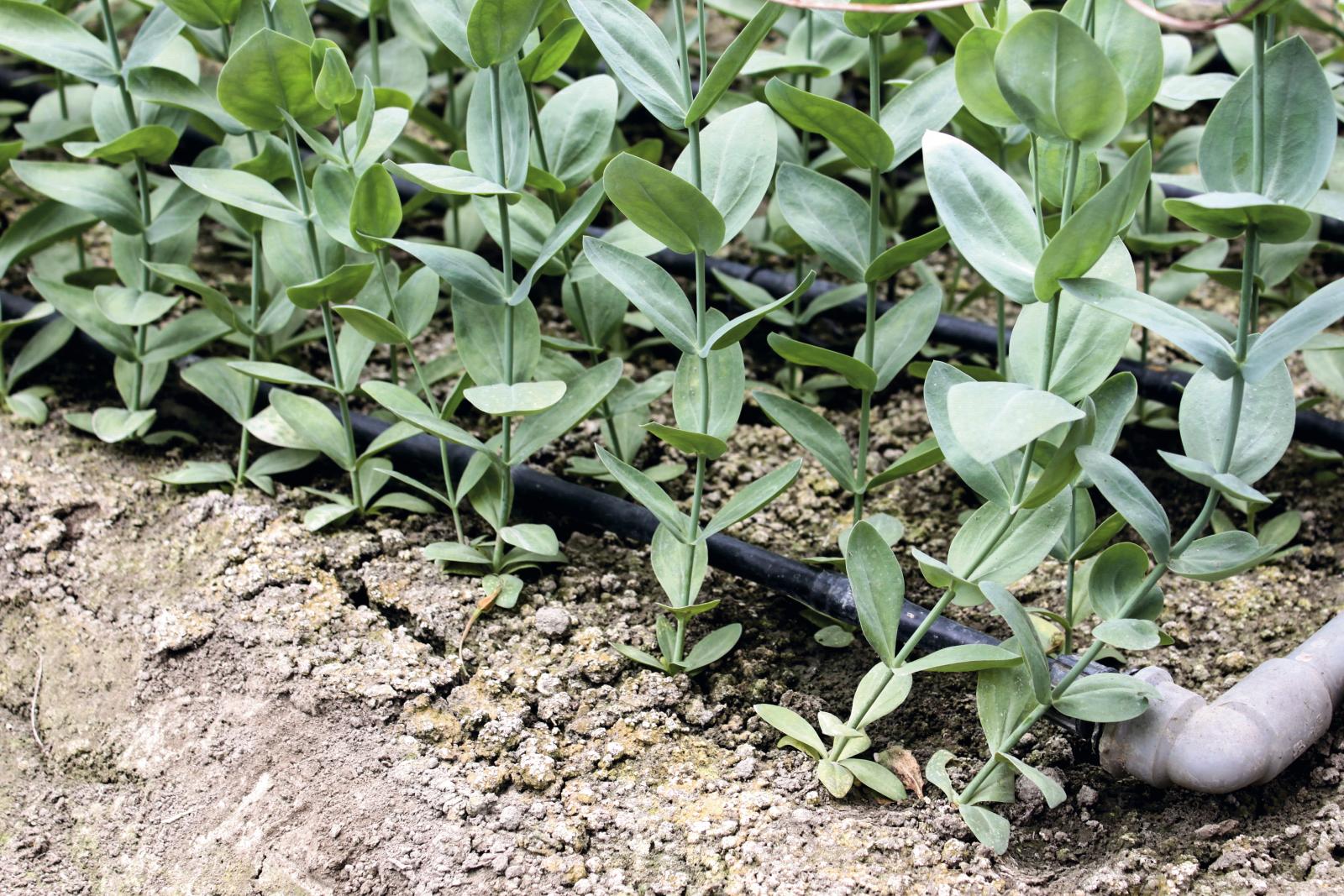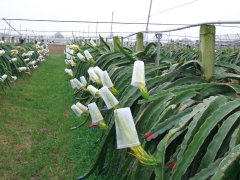How to build a greenhouse? What are the methods and benefits of building a vegetable greenhouse?
According to the sharing of experts' experience, the common Liba greenhouse and intelligent flower facilities with science and technology and enterprise scale are introduced respectively, reminding farmers how to assess their needs, profits and other key points to create an ideal greenhouse suitable for them.
In order to stabilize the harvest, many farmers put into facility agriculture, but the quality of facility construction is mixed, and the ability to resist Taiwan is insufficient. When a typhoon comes down, the loss is even more serious. Therefore, it is urgent to promote greenhouse crops with enhanced structure. Taiwan is located in the subtropics and is rich in a variety of fruits and vegetables, but in recent years, the frequency of extreme weather has increased, typhoons are frequent in summer and autumn, and cold damage often occurs in winter, seriously affecting farmers' harvest. for this reason, the government has to spend a large amount of money on natural disaster relief.

The sustainable operation of greenhouse should consider sturdiness, durability, safety and profit
"improving profitability and sustainable operation is the primary consideration for the construction of greenhouses. Wang Shixian, director of the southern conversion field, says that if you want to make a profit, farmers can use the back-end access to see if the prices of crops cultivated in facilities meet the demand. Through crop rotation, such as growing small fruit tomatoes in many greenhouses in Chiayi County in winter, planting Meinong melons or green manure in summer, not only sustainable use of the soil, but also improve the quality of crops.
The crop Environment course in Nangaichang suggests that from the point of view of farmers, we should first decide what crops should be planted, and that the yield and output value of cultivation in the open air or in the warm-net room are higher. How long will it take to recover the cost? If you grow well in the open air, why do you need a greenhouse? Then it is evaluated and considered from the point of view of preventing diseases and insect pests, preventing rain, resisting wind, preventing birds, changing microclimate and so on. However, greenhouses also have disadvantages, such as high temperature and humidity in summer and large temperature difference between day and night. Without proper environmental control, it is easy to breed diseases and insect pests.
In order to save money, some farmers often choose a simple plastic greenhouse with lower cost. According to the crop Environment course in Nangaichang, farmers grow small fruit tomatoes in a simple plastic cloth greenhouse, which has almost a certain level of quality, but the simple greenhouse structure is more fragile, and there is a greater risk of damage or being blown down when a typhoon comes. Since it is a highly cash crop, it is still recommended to use a basic structure-enhanced greenhouse.
Last year, Typhoon Meggie hit the central and southern agricultural areas hard. Lin Liangmao, director of the Agriculture Department of Chiayi County Government, observed that early farmers would increase the span of simple plastic sheeting greenhouses in order to make the workers and machines in the greenhouse operate smoothly.
"everything was fine before, but after it began to increase and rise, it became like a lantern-like structure, which was very good-looking, but there was no way to resist Taiwan. The typhoon caused many greenhouse "soft feet", damaged crops and property, and even crushed people to death. Lin Liangmao believes that some simple plastic cloth greenhouses are seriously insufficient in strength, and what is needed in recent years is a structurally enhanced greenhouse that can withstand natural disasters and protect the safety of farmers.
Lin Chunsheng's Liba greenhouse grows asparagus, and the high design keeps the room ventilated, so that employees can enjoy a comfortable working environment.
Facility agriculture has a stable harvest, and short-term leafy vegetables can also make a profit.
According to the traditional view, it is necessary to grow high cash crops in the greenhouse to make a profit, but Wang Shixian thinks that although the same crop can be cultivated in the open air and in facilities, the facilities can have a stable harvest throughout the year and better quality, so they will have a chance to make a profit.
Futian Agricultural production Bank, located in Yuantong Township, Yunlin County, is a good example. Lin Chunsheng, the person in charge, built a powerful greenhouse on the ground at 5 points. It was raining on the day of the interview, and there was a drainage channel on the roof of the greenhouse, which could collect Rain Water and drain it into the ditch. In addition, there is a large temperature difference between day and night, and it is easy to dew. Lin Chunsheng is worried that the water droplets will fall from high places and the vegetable leaves will be hurt, so agricultural tape made of drip-proof material is used in the greenhouse and the roof dew is diverted to the drainage channel.
From the point of view of the appearance, Lin Chunsheng's Liba greenhouse roof is a round arch plus a single oblique multi-span. Lin Chunsheng said that the arched roof is wind-resistant at the outermost, and the ventilation in the middle of the multi-span greenhouse is usually poor. In order to increase air convection and ventilation, a single-sloping roof is used in the middle.
What Lin Chunsheng grows in the greenhouse is not any special high cash crop, but hollow cabbage. He said that the land price per kilogram of facility asparagus in summer is 2 yuan more than that of open-air cultivation, and it is 5 yuan more in winter. If there is a wind disaster and there is a shortage of vegetables in the market, the production price of facility asparagus vegetables can also be 12 yuan higher than that in the open air. The average cost of a greenhouse is NT $1.2 million to NT $1.4 million. If it is properly managed, the cost can be recovered in about 4 to 5 years.
Looking around the greenhouse, we found that in addition to adopting a high design inside, there was a black shading net hanging on the beam, and sockets were installed on every other column to facilitate the electric fan to connect to the power supply. This is Lin Chunsheng's intimate design to make the staff comfortable. It is generally believed that although the greenhouse is high and ventilated, the risk of being tilted by strong winds is also greater. However, Lin Chunsheng's greenhouse uses integrated hot-dip galvanized steel pipe, which has strong wind resistance, so there is no need to worry even if it is too high.
The water table of the local farmland is high, and the rain is easy to accumulate water. for the crops in the greenhouse, waterproofing is the top priority. The sidewall of Lin Chunsheng's greenhouse is made of cement and drains are dug. When it rains, it becomes a moat, which is drained by a pumping motor.
In addition, when the same kind of crops are planted on the same land for a long time, the soil and crops are prone to developmental disorders and accumulate diseases and insect pests, and continuous cropping obstacles are formed after a long time. Lin Chunsheng also has a magic weapon, that is, to install steam hoses in the greenhouse and disinfect the soil with steam. On the whole, indoor and outdoor designs are full of ingenuity.
Hollow vegetable farmer Lin Chunsheng's greenhouse roof is equipped with drainage channels, which can concentrate Rain Water into the ditch.
Wang Shixian affirmed the design and management of Lin Chunsheng's bully greenhouse. He said that although asparagus is not a high cash crop, it can be harvested 14 times a year in the facility, with a high turnover rate. "it rained continuously at the beginning of June this year, and others had no vegetables. He had vegetables, and others could use greenhouse cultivation to achieve this model. "

Greenhouse combined with drip irrigation system saves water and labor.
The Huwei Flower Zone, also located in Yunlin County, has a number of early-built Liba-type greenhouses on 4.07 hectares of land. This area was once a famous special area for the production of summer vegetables and winter flowers, growing heat-resistant varieties of small fruit tomatoes in summer and chrysanthemums in winter. later, the export order of Platycodon grandiflorum increased, so it was gradually changed to the cultivation of Platycodon grandiflorum throughout the year.
Although the local greenhouse was built in 2002 and has an old appearance, it has survived several typhoons and stood firm. Cai Wuji, director of the promotion department of the Huwei Peasants' Association, said that the greenhouse in Huwei used hot-dip galvanized H-shaped steel a long time ago, so it is not easy to rust in the soil environment.
In the greenhouse, the height design is adopted, and the skylight is adjusted with internal circulation fans and manual switches to increase ventilation; with an indoor span of 11 meters, the planned utilization rate of the work line can reach 82%, which is much higher than that of about 70% of the general greenhouse.
In terms of irrigation, due to the high iron content of groundwater in Yunjiannan area, it is easy to cause pipeline blockage. After pumping groundwater from Huwei Flower area, it will first be treated by reverse osmosis system (RO), and each plant of Platycodon grandiflorum will be fed with drip irrigation equipment. Wang Shixian said that with the exception of leafy vegetables, fine agriculture should be treated by drip irrigation, which saves both water and labor.
If the pipe is not rust-proof, the rusty place is vulnerable to long-term wind and rain, immersion, resulting in fracture. (photography / Wang Wenhao)
An integrated shaped pipe should be used to avoid rust and bending due to stagnant water at the joint, and the screws also need anti-rust treatment. (photography / Wang Wenhao)
Introduce science and technology, intelligent facilities to make enterprise scale
If farmers have the ability and take a long-term view, in addition to building enhanced structural greenhouses, they can also consider investing in higher-end technology and environmental control systems.
The star orchid, located in the Taiwan Orchid Biotechnology Park in the back wall of Tainan City, drives through the periphery of the factory area, showing a magnificent multi-span greenhouse and entering the "fanless water wall green energy greenhouse." the elaborate design and computer control system are even more amazing. These ideas all come from the genius of the industry, Lin Xingxing, chairman of Star Orchid Garden.
What Lin Xing does is orchid stem inhibition cultivation, Damiao specializes in overseas markets, and export countries span five continents, including the United States, Canada, Japan, France, South Africa and Dominica. From September to April every year, low temperature will promote Phalaenopsis to pull out the pedicel, that is, from seedling to flowering plant, so how to control the temperature to inhibit the pedicel has become the key.
Usually orchid production in summer through the fan water wall, let cold air circulation in the greenhouse to achieve the purpose of cooling; in winter depends on oil, gas or electricity heating, heating and cooling are necessary for the orchid industry. However, with the recent high energy costs, how to effectively control costs has become very important. Referring to the principle of constant temperature under the ground of nature in northern Europe, Lin Star developed a tall windless fan water wall green energy greenhouse.
Huwei Flower area in Yunlin County has used drip irrigation system for a long time, which saves water and labor.
Lin Xing showed off a smart phone with a computer coding system he developed to accurately control the microclimate in the greenhouse, including temperature, humidity, wind direction, wind speed, boiler operation and skylight opening and closing direction. With a machine in hand, even if people are abroad, they can also know the cultivation status of the park.
Because of the assistance of this system, it used to cost about NT $900000 a month to warm up in winter. he observed the cold effect of the northeast monsoon and fine-tuned the parameters, saving more than NT $400,000. Lin Xing said that ordinary people will find the central point of the greenhouse as the temperature standard. in fact, the temperature of each point in the greenhouse is different. If all of them are heated with the central temperature as the standard, when the sun slants in winter, the surrounding temperature is relatively high and continues to heat up. It will be a waste of energy. "my heating system is targeted, which point will make up for the deficiency. "

The fan-free water wall green energy greenhouse is so wide that there is no end to the entrance, the floor is shining tiles, and there are small bicycles for employees to tour the garden. In the greenhouse, irrigation through two automatic watering machines developed by Lin Xing can save 7 manpower and achieve the goal of water saving. Lin Xing does not use the fan water wall because the greenhouse is designed to be high. If you install the fan water wall and pull it higher, the temperature layer will become too much and consume electricity. However, because the waterless wall introduces wet air indoors, which not only reduces humidity, but also reduces diseases and insect pests, he also uses a 360-degree rotating turbid fan made in Japan to achieve omni-directional circulating ventilation and constant temperature.
Wang Shixian said that farmers should know best what kind of greenhouse they want to build and what functions they need to have. For example, the more precise the greenhouse control of Lin Xing is, the better the effect is and the more labor-saving it is, but the higher the precision is, the more energy is consumed. Therefore, Lin Xing emphasizes making good use of energy to save costs, which can only be achieved with a comprehensive understanding of plant physiology and the application of science and technology.
Lin Xing developed a fanless water wall green energy greenhouse to develop orchid stem suppression cultivation. (photography / Wang Wenhao)
Through the control of computer intelligent system, the temperature control can be more accurate. (photography / Wang Wenhao)
Make good use of science and technology to improve the efficiency of management and get rid of looking at the sky.
Chen Guoming, a florist in Yunlin and head of Jingpin Horticulture Co., Ltd., also believes that only by investing in advanced automation equipment, finding energy-saving ways and improving efficiency can we have the opportunity to make a profit and reduce the overall cost. "some people think that farming should save costs and reduce investment in equipment, which is wrong. If you want to increase profits, you can only call an industry under controllable conditions. "
Chen Guoming has successfully cultivated Platycodon grandiflorum. In addition to covering an area of 1.7 hectares to build a greenhouse for cut flowers, there is also a seedling greenhouse that uses an environmental control system to cool and dehumidify. When it enters the room in summer, a cool cool is coming.
The required temperature for Platycodon grandiflorum seedlings is 25-27 degrees Celsius during the day and 16 degrees Celsius at night. In order to overcome the high temperature and make Platycodon grandiflorum dormant, early flower farmers mostly transported to Alishan or near Qingjing Farm in Nantou to raise seedlings. In the early days, the effect of raising seedlings at low temperature in the mountains is good, but there are also times when the natural conditions are unstable, for example, if the winter is too cold, the high humidity on the mountain is easy to interfere, or you can only choose to raise seedlings in a certain season, but the transportation cost is also an expense.
Nowadays, the flat greenhouse has environmental control equipment, which can be adjusted into the environment that Platycodon grandiflorum likes, and flowers can be supplied all the year round. Chen Kuo-Ming said that an imported seedling costs NT $3 to NT $4.5, and it costs only NT $2.6 to NT $3 to grow in cold rooms in Taiwan, which is relatively competitive.
In order to reduce the heat source into the greenhouse cold room, Chen Guoming not only has a shade net at the top, but also installs double-layer inflatable plastic film for thermal insulation.
"if you want to reduce operating costs, you must save energy and improve efficiency. Chen Guoming said that the cold room in his nursery room uses a heat pump (a device that transfers heat energy) to make ice water, which is recycled into the greenhouse and then takes the heat out of the greenhouse, which can help cool the room and save more energy than fuel heating.
In particular, he warned that do not underestimate the sun, light is also one of the heat sources. In order to reduce the heat source entering the greenhouse and cause the burden of air conditioning, the top of the greenhouse is equipped with a layer of external shading and double inflatable plastic film, which is used to block light, and the double inflatable plastic film can perform the thermal insulation effect like a thermos bottle. In general, there is only one layer of plastic film to protect the greenhouse from the wind and rain. Chen Guoming's greenhouse is insulated by an extra layer of plastic film, which can be said to save electricity indirectly in the cheapest way.
"in the past, agriculture depended on heaven for food, but now it has to rely on equipment to make money. Chen Guoming said that agriculture is a major, and farmers must think twice before investing in equipment, including what crops to grow, whether the output value and output are competitive, how much space to allocate, how much efficiency the equipment can improve, how effective the heat preservation is, how to save the most energy, whether the overall operating cost can be reduced, and so on.
He suggested that farmers should improve their professional knowledge, work steadily step by step, and constantly watch how operators at home and abroad operate. If they can learn from other people's mistakes, they can take fewer wrongs. In the future, he also hopes that after the increase in production capacity, he can buy better equipment, enable employees to enjoy a comfortable and friendly working environment, and attract young people to agriculture.
- Prev

How to grow dragon fruit? Cultivation techniques, diseases and insect pests and control methods of dragon fruit
Many farmers continue to join the ranks of red dragon fruit cultivation, for the red dragon fruit cultivation and management is bound to pay more attention to the field plant growth, in order to reduce the occurrence of diseases and insect pests and other problems. The improvement of varieties, cultivation techniques and yield period of Honglongguo in recent years
- Next

What does agricultural catastrophe insurance cover? The necessity of constructing Agricultural Occupational disaster guarantee
Farmers themselves lack awareness of occupational safety, lack of occupational disaster insurance claims, fear that the crops will not be harvested in time, and continue to engage in farming with illness and pain. Compared with other industries, is the risk of agriculture high? Is there a legal source to ensure the occupational safety of farmers?
Related
- A one-day flower show brings 130 million yuan in orders! Nanhai, this Phalaenopsis exhibition is amazing
- What do the flower language and meaning of Lutheran tree mean? Precautions for planting Lutheran tree
- Encounter Chaoshan Kongfu tea, not without this cup of Phoenix single clump
- The durian market in Vietnam and Thailand is flooded. The price of imported durian has plummeted by 30-40% in a month.
- Shanghai solved the problem of local vegetable supply by planting 80,000 mu of green leafy vegetables.
- Wageningen University has become the best agricultural university in the world for the seventh time in a row.
- The strongest export season of South African grapes is full of challenges, with exports to Russia falling sharply by 21%.
- Sri Lanka is on the verge of bankruptcy, "Tea for debt" Organic Agriculture Revolution aggravates the Food crisis?
- Turning waste into earthworm manure and worm manure into organic fertilizer-A new choice for auxiliary farming
- Organic rice growers shoulder the responsibility of nurturing agricultural talents! Yinchuan Sustainable Farm with Organic Life Camp

